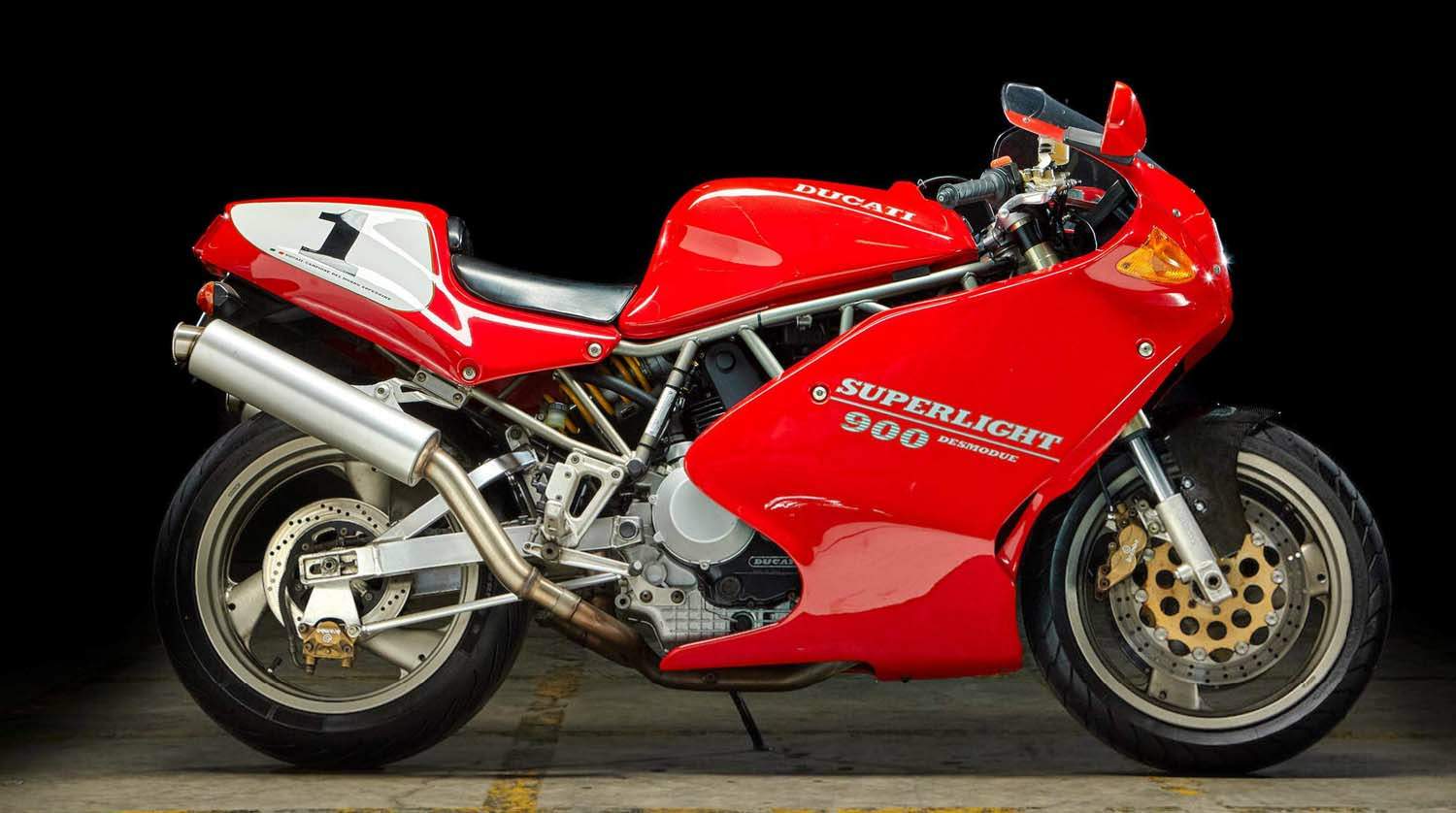Motorcycle Investor mag
Subscribe to our free email news
Ducati's 1990s Super Sport
(by Ian Falloon, Sep 2022)

Nineties
classics
Without doubt, the carbureted Supersport of 1991-98 has become one of the classic modern Ducatis. Until the advent of the 916 in 1994 they were Ducati’s mainstay in terms of sales, and remained a competent and desirable sporting machine until they were replaced in 1998.
Although still heavily derived from the flawed 1990 version, amazingly the new Supersport looked like a fresh design. It was functionally superior to its predecessor in nearly every respect. Soon after the appearance of the 900 at the Cologne Show at the end of 1990, came a range of smaller Supersports, initially in 750, then 350 and 400, and finally 600.
So successful has the model been that total production has exceeded that of any other model, with over 50,000 (including the earlier 750 Sport and 900 Supersport) being produced through until 1997.
900 SUPERLIGHT
Following the success of the numbered series of 851(888) Sport Production bikes in 1990 and 1991, a numbered series of 900 Super Sports was planned for 1992. To be called the 900SL, or 900 Superlight, originally 500 bikes were to be made, but this eventually became about 900 with 300 bright yellow ones going to the USA. However, unlike the 888SP's, the Super Light had the standard 73 bhp 900SS engine, frame and suspension.
The light weight parts on the bike in the form of carbon-fibre mudguards, vented clutch cover, and 17 inch Marvic composite wheels of the type fitted to the 750 Montjuich, Santa Monica, 851 Strada of 1988, and Japanese market 400SS of 1989. Other main differences were a single seat (with minimal padding), high rise exhausts, and fully floating 320mm Brembo front discs.
The Superlight was only offered with a full fairing, and with a claimed weight of 176kg (388 lb) it was indeed a light bike, being significantly lighter than any comparable bike in its class.
The next year saw the release of “Superlight II”, and this model was unfortunately a step backwards. Repeating a scenario so often typical of Ducati, the first model was the best, with subsequent versions losing many of the special detail touches. The first to go were the Marvic wheels, replaced by the regular Brembo type, now painted bronze to match the frame.
There was no longer a vented clutch cover, and even the fully floating Brembo front discs were replaced by the normal steel variety. The only concession made to differentiate the Superlight II from the normal 900SS was the use of a fully floating rear brake linkage, with a carbon-fibre torque arm.
Breakages of this on some early models of both the Superlight II and 888SP5 saw its replacement by an alloy item. All these changes pushed the claimed weight up to 179kg (395 lb), though “PS” weighed their 1993 test bike in at 200.5kg (442 lb) wet, only 3kg up on the 1992 model. Massimo Bordi admitted to me in 1993 that the Superlight of that year had been a mistake, and many details were rectified for 1994.
While the cosmetics of the 1994 Superlight III were very similar to the Superlight II, there were quite a few changes. First, the fully floating Brembo front discs returned and instead of the regular clutch cover, a carbon-fibre one appeared.
There was a new, stronger swing-arm, and the suspension was uprated through the use of the 41mm higher specification upside down Showa forks that had appeared on the 1993 888SP5. The brake and clutch fluid reservoirs were remotely mounted, and the colours were now red or yellow.
Weight was up yet again, to 182kg (401lb) dry, but the Superlight III was a more attractive proposition than the Superlight II had been. The Superlight IV of 1995 was almost identical, but for the addition of an oil temperature gauge and the new windshield, both shared with the 900SS. Each year production was reduced, and only 578 Superlights were produced in 1995.
For the US market, the Superlight was no longer offered in 1994. In its place was the 900SS Sport Production, a Superlight III with a dual seat and low exhaust pipes. The 175 of these also came with a serialised plate, and they were again offered in 1995.
The lack of any passenger accommodation was one of the limitations of the Superlight, and in many markets they had to be discounted. While the sporting purist preferred the single seat, most buyers required the pillion seat. For that reason the regular 900SS consistently outsold its more expensive, and glamorous partner.
If the Superlight had been a genuine limited edition bike, like the 888 Sport Production series, offering improved engine performance along with better quality suspension, it may have been more successful. As it was, for most buyers, there were few benefits over a standard Super Sport to justify the additional cost.

-------------------------------------------------
Produced by AllMoto abn 61 400 694 722
Privacy: we do not collect cookies or any other data.

Archives
Contact





